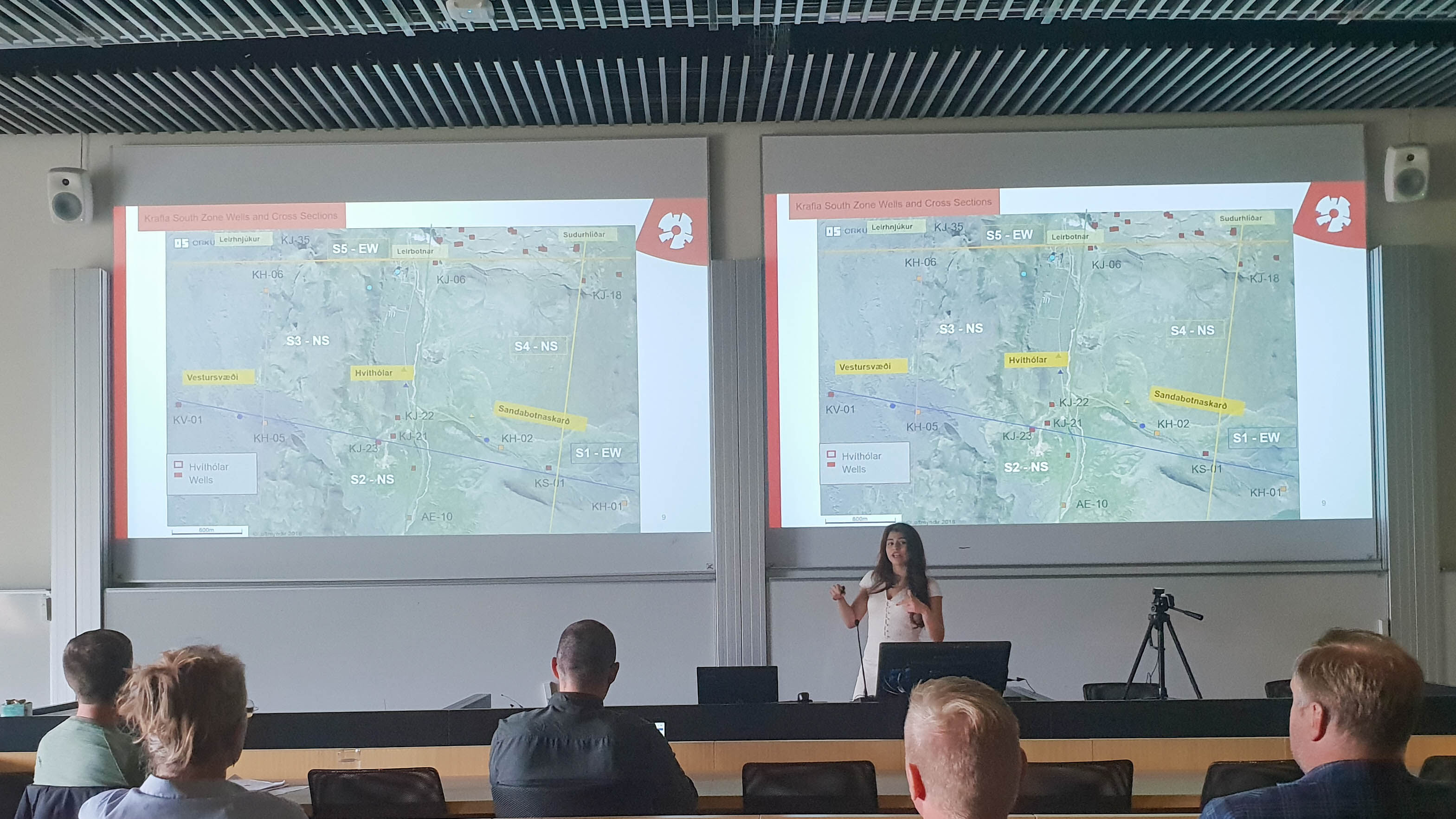MSc Thesis: 3D conceptual model Hvíthólar sub-area, Krafla Geothermal Field Iceland
REYKJAVIK, September 04 - MSc in Sustainable Energy candidate, Nataly Castillo Ruiz, successfully defended her master's thesis where she created a 3D conceptual model of the Hvíthólar sub-area within the Krafla geothermal field in Iceland. Nataly's research was supervised by Juliet Newson from Reykjavik University, as well as Egill Júlíusson and Anette Kaergaard Mortensen from Landsvirkjun.
 Nataly's project built on an existing 3D conceptual model for the Hvíthólar sub-area in the South Zone of Krafla Geothermal Field. As Nataly explains, Hvíthólar is one of 6 sub-areas in south Krafla, located at the intersection of the south boundary of Krafla caldera, striking E-W, and the NNE-SSW oriented fissure swarms of the North Volcanic Zone. Her model extends along Vestursvæði, Þríhvrningar, Hvíthólar and Sandabotnaskarð sub-areas with a combined area of around 30 km2.
Nataly's project built on an existing 3D conceptual model for the Hvíthólar sub-area in the South Zone of Krafla Geothermal Field. As Nataly explains, Hvíthólar is one of 6 sub-areas in south Krafla, located at the intersection of the south boundary of Krafla caldera, striking E-W, and the NNE-SSW oriented fissure swarms of the North Volcanic Zone. Her model extends along Vestursvæði, Þríhvrningar, Hvíthólar and Sandabotnaskarð sub-areas with a combined area of around 30 km2.
As she elaborates in her defence, Hvíthólar is the only southern sub-area connected to Krafla power station and has exhibited a considerable production decline over the period of 1990 – 2013. According to a lumped simulation, the Hvíthólar reservoir follows a two tank open system with a volume of 6.00004 km3. The Hvíthólar enthalpy is approximately 1200 kJ/kg; chemically it presents a low concentration of Cl-, and high CO2.
To date, Nataly adds, most studies support the hypothesis that Hvíthólar characteristics and behaviour are due to the lack of a heat recharge and that the sub-area is in a phase of waning or even becoming extinct. She goes on to advise that an improved understanding of heat source location and permeability variations will provide the basis of future utilisation decisions.
Nataly's research presents two alternative conceptual models for Hvíthólar in addition the existing one, as a means to test the current conceptual model in order to determine the potential to extend the life of the asset. Nataly updated the geological model based on data from shallow and deep wells along the southern part of Krafla geothermal field. This update combined with existing data from surface exploration was used to generate three conceptual models in Leapfrog Geothermal. Her models focus on the location of heat source, and the permeability variation at the intersection between caldera boundary and fissure swarm. Nataly validated each model with TOUGH2 simulations.
Congratulations to Nataly for an excellent thesis defence!
